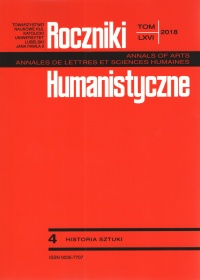Representations of the Crucified Christ in the Spanish sculpture of the Golden Age
Abstract
The Spanish sculpture of the Golden Age was thoroughly religious. The artists of that time drew mainly from the Bible, especially from the New Testament, but they also turned towards hagiography and the history of Christian martyrs. They considered the saints and their history with reverence, thus fulfilling the requirements and provisions of the Council of Trent regarding art. The exclusivity of religious content in Spanish art resulted in the creation of original works showing themes that artists from other great artistic centers did not reach. Popular piety activated the artists in referring to the work in such a way as to bring spiritual benefits to the recipients.
Christian spirituality is inextricably linked with the history of the Redemption, which was accomplished through the death and resurrection of Jesus Christ. The crucifixion of Jesus is the focal point of the Passion. It is also one of the New Testament themes most commonly discussed by artists of all times. The Spanish sculpture of the Golden Age could not do without this fundamental event in the salvation history. The Crucified Christ was often presented by the greatest sculptors from the Iberian Peninsula. Through the form of expression, as well as craftsmanship of the creators, the content conveyed by the Gospel not only affected the faithful spiritually, stimulating them to strong faith and reflection, but also influenced their aesthetic sense.
References
Babelon J. Sztuka hiszpańska, Warszawa 1974.
Bennassar B., La España del Siglo de Oro, Barcelona 2004.
Camón Aznar J., Los grandes temas del arte cristiano en España, vol. III, Madrid 1949.
Encyklopedia Katolicka, t. VII, Lublin 1997.
González Gómez J.M., Restauración del Cristo de la Expiración de écija, obra de Pedro Roldán, “Laboratorio de arte” 12 (1999), s. 163-169.
Grzybkowska T., Malowane figury i rzeźbiarskie obrazy. Hiszpański triumf potrydenckiej dewocji, [w:] Sztuka po Trydencie, Kraków 2014, s. 151-162.
Hernández Díaz J., Martín González J.J., Pita Andrade J.M., Summa artis. Historia general del arte, Madrid 1982.
Jezus według mistrzów, red. E. Olczak, Warszawa 2008.
López-Guadalupe Muñoz J.J., Imágenes elocuentes. Estudios sobre patrimonio escultórico, Granada 2008.
Mâle E., El arte religioso de la Contrarreforma: Estudios sobre la iconografía del final del siglo XVI y de los siglos XVII y XVIII, Madrid 2001.
Pacheco F., El arte de la pintura: su antiguedad y grandezas, Sevilla 1649.
Pismo Święte. Stary i Nowy Testament, red. ks. M. Peter, ks. M. Wolniewicz, Poznań 2006.
Roda Peña J., Crucificados escultóricos sevillanos entre el Renacimiento y el primer naturalisto barroco, [w:] En torno al requiem de Tómas Luis de Victoria. Ensayos sobre arte, música y pensamiento, Sevilla 2006, s. 51-68.
Copyright (c) 2018 Roczniki Humanistyczne

This work is licensed under a Creative Commons Attribution-NonCommercial-NoDerivatives 4.0 International License.





